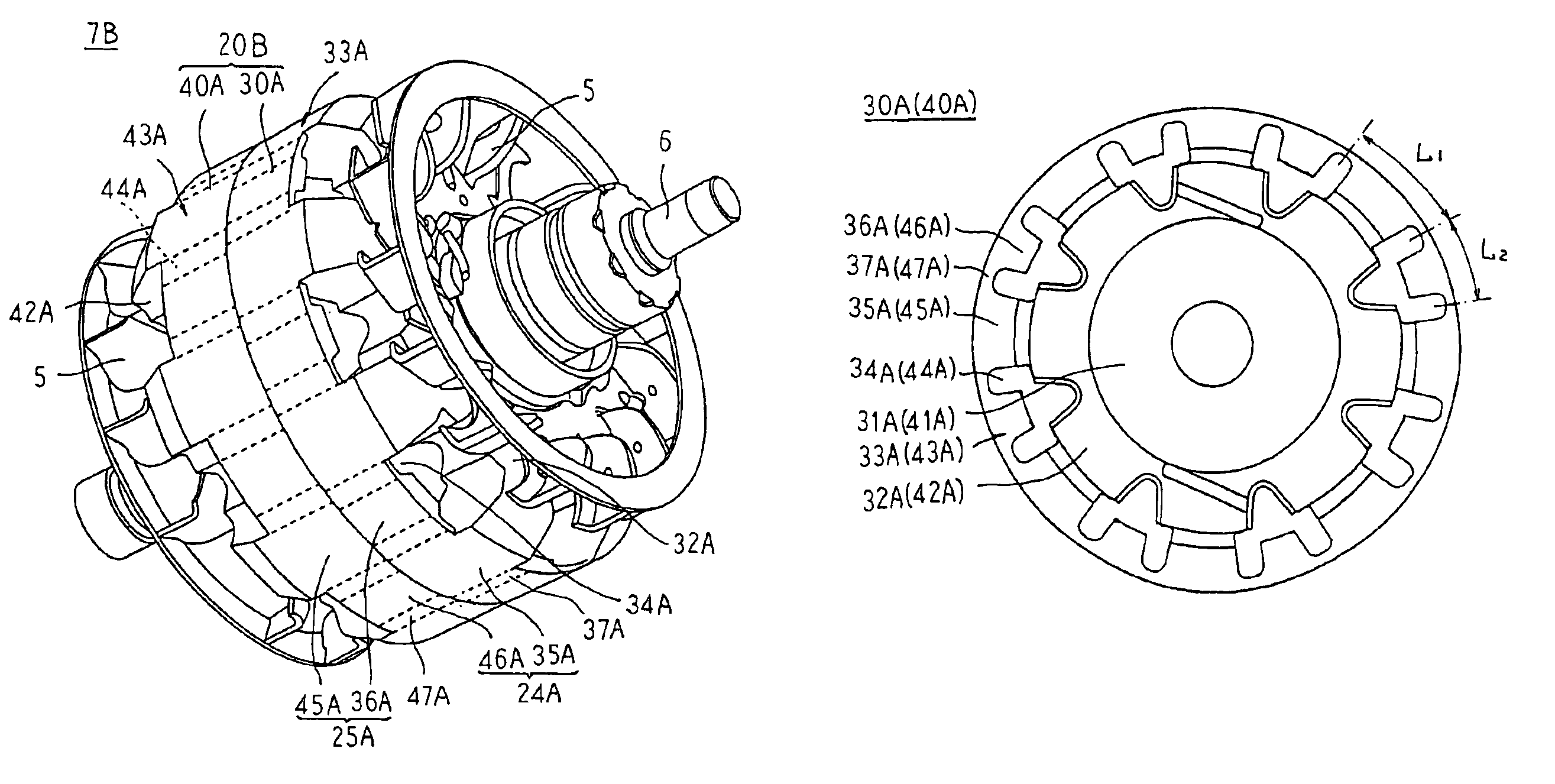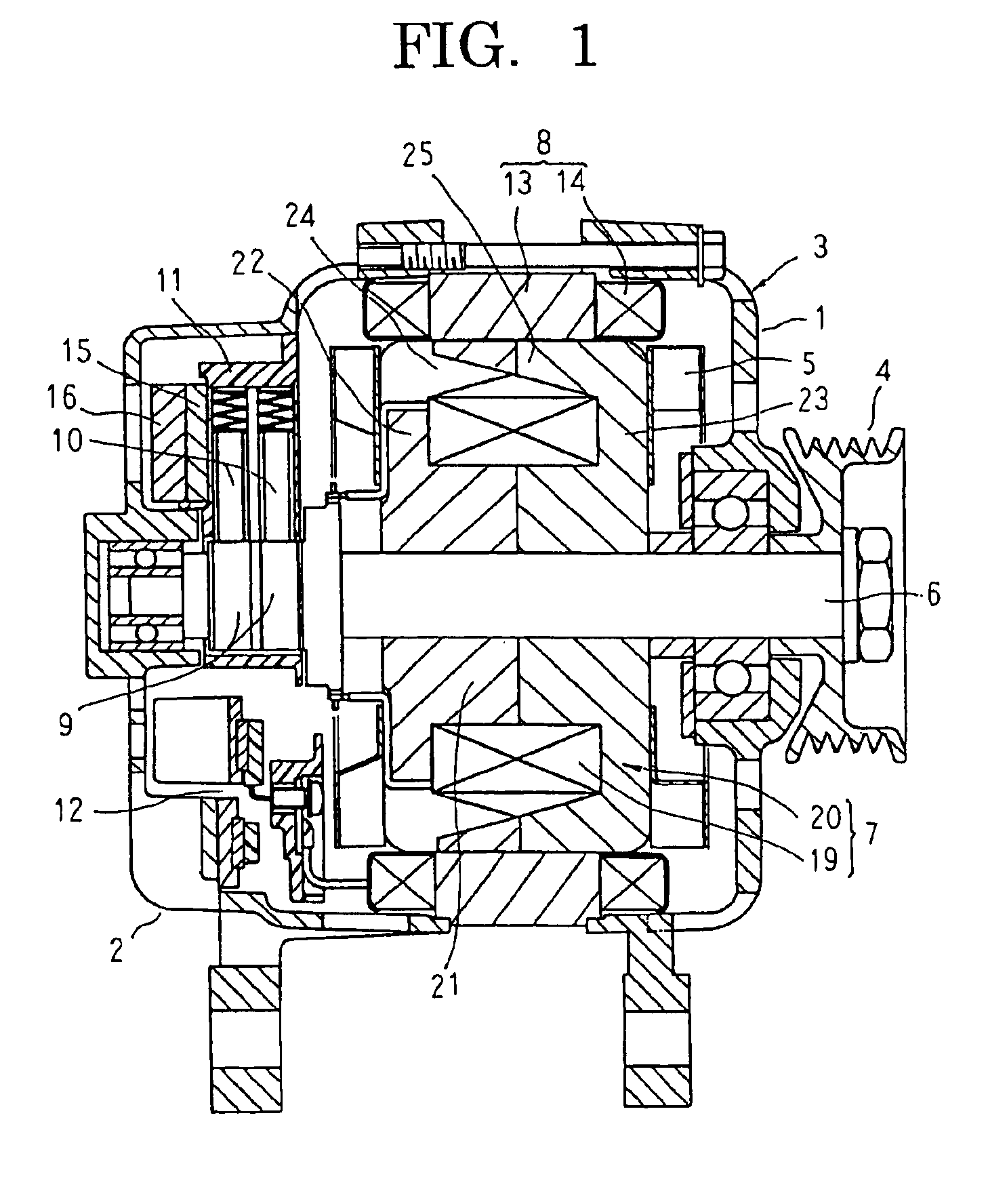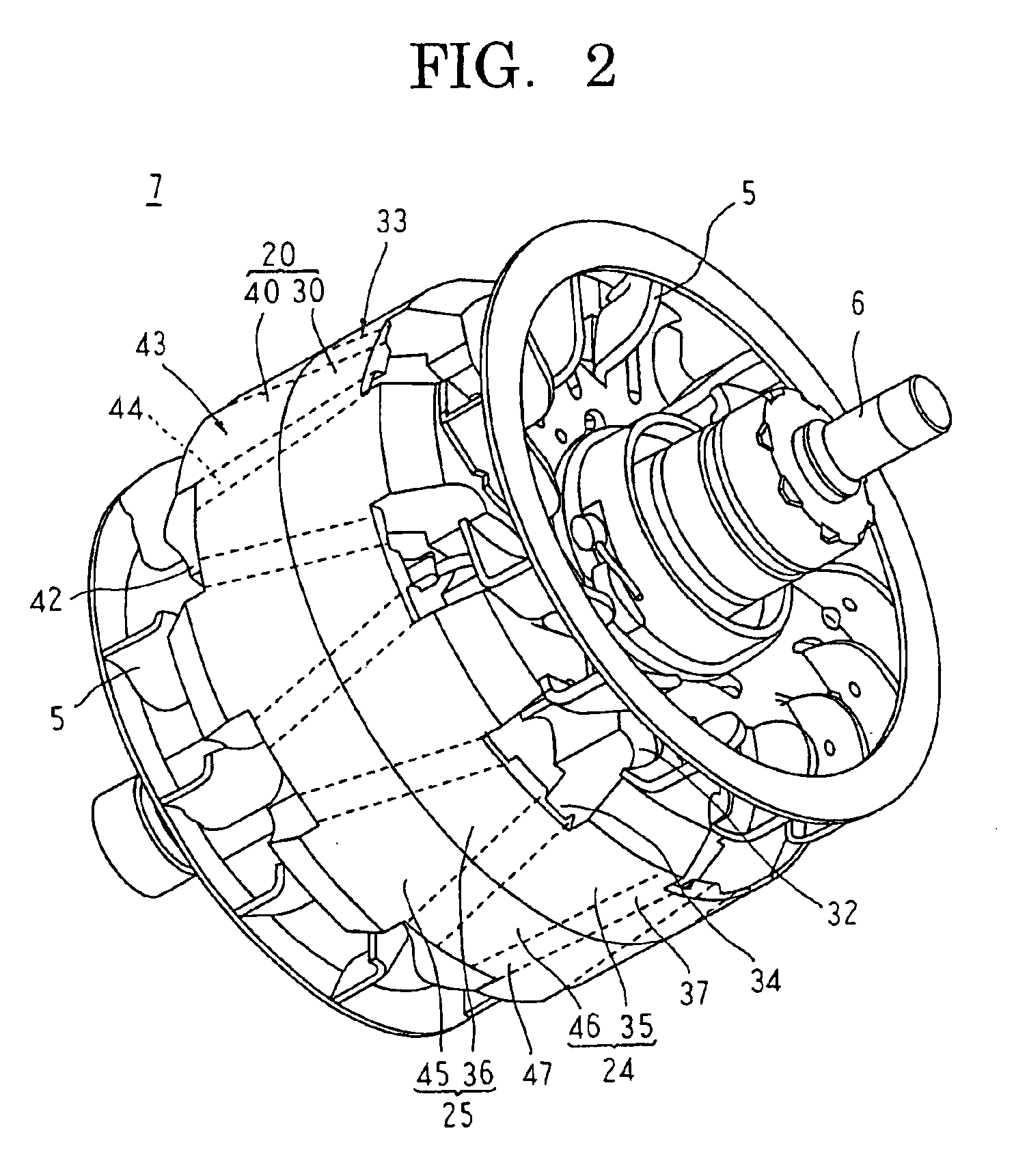Rotor for rotary electric rotor
a technology of electric rotor and rotor core, which is applied in the direction of stator/rotor body manufacturing, magnetic circuit rotating parts, and shape/form/construction of magnetic circuits, etc., can solve the problems of increased irregular output of the rotor, reduced strength of the magnetic pole itself, and reduced strength of the magnetic pole. , to achieve the effect of reducing wind splitting noise, preventing disintegration and deformation of the magnetic pole portion, and increasing the strength of the magnetic pol
- Summary
- Abstract
- Description
- Claims
- Application Information
AI Technical Summary
Benefits of technology
Problems solved by technology
Method used
Image
Examples
embodiment 1
[0026]FIG. 1 is a longitudinal section showing an automotive alternator according to Embodiment 1 of the present invention, FIG. 2 is a perspective showing a rotor of the automotive alternator according to Embodiment 1 of the present invention, FIG. 3 is a front elevation showing a divided core of the rotor of the automotive alternator according to Embodiment 1 of the present invention viewed from a side near a dividing surface, and FIG. 4 is a cross section taken along line IV—IV in FIG. 3 viewed in the direction of the arrows. Moreover, in FIG. 4, a first core division is indicated by broken lines to facilitate explanation.
[0027]In FIG. 1, an automotive alternator functioning as a dynamoelectric machine is provided with: a case 3 constituted by a front bracket 1 and a rear bracket 2 made of aluminum; a shaft 6 disposed inside the case 3, a pulley 4 being secured to a first end portion of the shaft 6; a rotor 7 secured to the shaft 6; fans 5 secured to first and second axial end po...
embodiment 2
[0043]FIG. 5 is a perspective showing a rotor of an automotive alternator according to Embodiment 2 of the present invention, and FIG. 6 is a longitudinal section showing a rotor core of the rotor of the automotive alternator according to Embodiment 2 of the present invention.
[0044]In FIGS. 5 and 6, a rotor core 20A is constructed so as to be divided into a cylindrical portion 51, first and second yoke portions 52 and 53, and a cylindrical magnetic pole portion 54, each prepared as a solid body of a magnetic material such as iron, etc. Recessed grooves 55 having a groove direction lying in an axial direction are recessed into an inner peripheral surface of the cylindrical magnetic pole portion 54 at a uniform angular pitch in a circumferential direction, and claw-shaped magnetic poles 56 are formed so as to be arranged at a uniform angular pitch in a circumferential direction. These claw-shaped magnetic poles 56 are separated on an inner peripheral side by the recessed grooves 55, a...
embodiment 3
[0051]FIG. 7 is a perspective showing a rotor of an automotive alternator according to Embodiment 3 of the present invention, and FIG. 8 is a front elevation showing a divided core of the rotor of the automotive alternator according to Embodiment 3 of the present invention viewed from a side near a dividing surface.
[0052]In FIGS. 7 and 8, a rotor core 20B is divided at a central position in an axial direction into two sections constituted by first and second core divisions 30A and 40A.
[0053]The first core division 30A is prepared as a solid body of a magnetic material such as iron, etc., and includes: a first cylindrical sub-portion 31A; a first yoke portion 32A disposed so as to extend radially from an outer peripheral edge portion at a first axial end of the first cylindrical sub-portion 31A; and a first cylindrical magnetic pole sub-portion 33A linked to an outer peripheral portion of the first yoke portion 32A and formed so as to be concentric with the first cylindrical sub-port...
PUM
 Login to View More
Login to View More Abstract
Description
Claims
Application Information
 Login to View More
Login to View More - R&D
- Intellectual Property
- Life Sciences
- Materials
- Tech Scout
- Unparalleled Data Quality
- Higher Quality Content
- 60% Fewer Hallucinations
Browse by: Latest US Patents, China's latest patents, Technical Efficacy Thesaurus, Application Domain, Technology Topic, Popular Technical Reports.
© 2025 PatSnap. All rights reserved.Legal|Privacy policy|Modern Slavery Act Transparency Statement|Sitemap|About US| Contact US: help@patsnap.com



